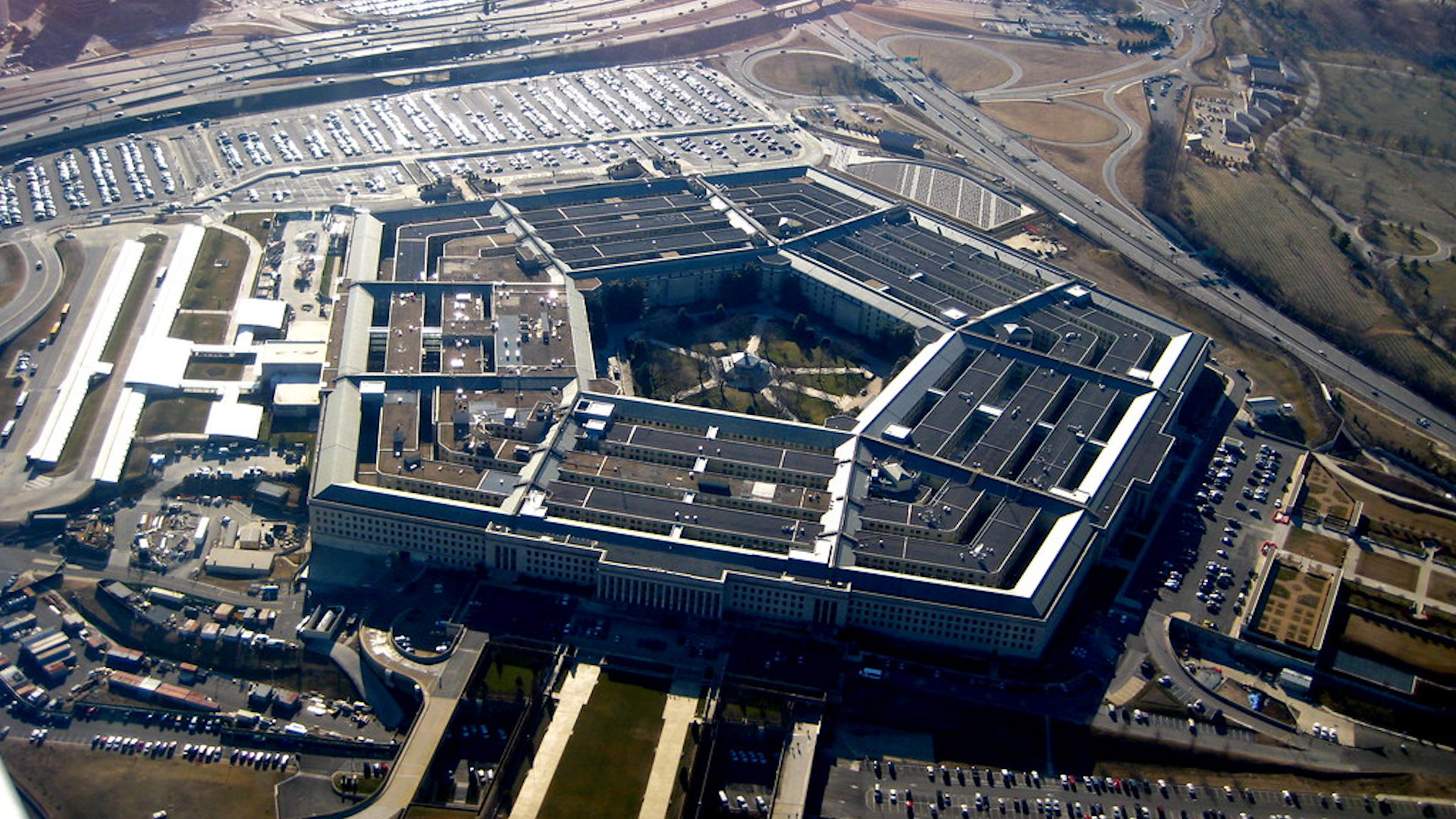
The defense industry is not a traditional industry in that it doesn’t necessarily follow the simple supply and demand models you learned in your Econ 101 course.
by Eddie Solares
Overview of Supply and Demand
Supply and demand models help economists and businesses understand and predict how prices for products move throughout the market. However, a fundamental assumption that the supply and demand models require to give us accurate predictions are not adhered by the defense industry. Supply and demand models require perfectly competitive markets, or as close to perfect as possible. A competitive market can be defined by five characteristics:
- The market has many buyers and sellers;
- Firms produce identical products;
- All market participants have full information about products and prices;
- Transaction costs are negligible; and
- Firms can enter or leave the market easily.
If we take a semi-competitive market such as toothpaste industry, we see that many of these assumptions are close to being met. The market has many buyers as most people buy toothpaste and many sellers also produce toothpaste. While some products can command a price premium on branding such as Colgate, most toothpaste products are nearly identical. Information on toothpaste and prices are available to all consumers. No large transaction costs are incurred in the selling and buying of toothpaste. Finally, innovative companies are free to enter the industry if they feel their toothpaste is either superior or cheaper. The criteria of being a semi-perfectly competitive market means that companies that produce toothpaste can implement basic supply and demand models and get results that are within an order or magnitude correct. For the defense industry, we go through each of these five characteristics and explain why this is not the case.
The Defense Market Has Few Buyers and Sellers
Although the U.S. government has many branches, it is still the sole customer of the entire industry. Foreign governments can also be considered customers, but national requirements for each country make it difficult for domestic defense contractors to sell abroad. Similarly, for most of the government contracts there is also very few suppliers of products that can provide the government specific products. The so called “invisible hand” of the market therefore can never reach market equilibrium if multiple sellers and buyers aren’t adjusting prices and quantities when the models are out of equilibrium. That is, the government (demand-side) doesn’t have competition to drive up the price if there is a shortage of product nor are there enough contractors (supply-side) to drive down the price if the market is oversaturated – an unlikely scenario given how unique defense products are.
Defense Contractors Produce Unique Products
Many of the largest government acquisitions tend to have highly specific technical requirements that companies must invest significant research and development to create the platform or government system required. Thus, the end result is typically a product that is highly unique and specific for the government customer. Even then, many platforms receive continuous upgrades throughout its lifecycle and the product that was developed initially may not be identical to the same platform 20 years down the line. Contractors have products that may seem similar (missiles, C4ISR, jets, etc.) to the layperson, but in fact are actually unique and suited for different platforms, combat missions, or roles. The elasticity of the supply and demand models are based on how replaceable the products are. Say, for example, can we really substitute a F-22 for an F-35 both of which are 5th generation fighters? The answer is no as both platforms serve entirely different mission purposes. The F-22 is a stealth air superiority fighter meanwhile the F-35 is a stealth multi-role fighter. Although on some levels, such as commercial off the shelf products, defense contractors may have similar products, for the most part their portfolios tend to be unique.
Platform Information is Obscured and Prices Aren’t Visible
In economics the term information asymmetry typically refers to a transaction where on party has more information about a product then the other. The typical example is the used car where only the former owner of the car truly knows its history. In the defense industry this is also the case where defense contractors tend to know much more about their products than both the government customer and their competitors. Similarly, pricing for most of the defense contract products are highly obscure. Both pricing and knowledge of the weapon systems tend to be proprietary making it difficult to compare similar weapon systems or platforms. When putting together a proposal for a government solicitation, there typically involves a pricing portion of the proposal. The technical requirements and the pricing are typically classified and the only glimpse into total pricing for a proposal can be found through protests. Even then, the pricing is based on the solicitation requirements and breakdowns and insight into the actual products are obscure. This information asymmetry that exists within the defense industry thus leads to government customers not being able to compare defense products to commercial solutions or competitors to undercut their competitors pricing which brings about market equilibria in typical supply and demand models.
Transactions Costs Have Significant Investment Requirements and Risk
Acquiring a weapon system is a multi-year, multi-step, complex process. A government contract isn’t like a typical transaction that occurs at your local store. In fact, many commercial companies who try to enter the defense market are perplexed why they simply can not just sell a product to the government. To win a government contract there are significant transaction costs required. First, the government must put out a solicitation stating what it is interested in acquiring. A defense contractor must have a proposal that addresses the solicitation requirements and the costs of developing such a proposal can be quite high. Many of the largest defense contractors have teams dedicated exclusively to writing proposals or hire third party proposal writers. This includes significant amount of time, effort, and even potential prototyping. Second, when the government does accept the solicitations it may only decide to award a contract to one defense contractor or even none. This puts defense contractors at significant risk of spending potentially large amounts of money and time and end up with no sale to the government. Not many defense contractors are able to gamble this amount of money and time. Although transaction costs can be embedded into supply and demand models, the highly complex potential costs and risks associated are difficult to model and embed since each contract is unique and highly unpredictable.
Upfront Capital Investments are Required, and Market Entry is Difficult
The economies of scale required by defense contractors are massive, making new prime contractors seldom enter the defense market. There are high, upfront capital expenditures that companies must make to even become remotely competitive with the top contractors. There is also much consolidation among the defense industry which massively improves their advantage when buying supplies on an economic quantity. This means that market entry is difficult for minor players and commercial players. Companies who have successfully entered the defense market have spent years building relationships and developing the framework to compete. A supply and demand model that allows for interchangeability requires that companies can easily enter and leave the market, a feature that is not present in the defense industry. The requirement is necessary for there to be a market equilibrium and contractors to become price-takers rather than price-setters. However, once a contract is awarded, limitations in technical scope and requirements allow for contractors to set the price that meets the requirements thus nullifying any use of basic supply and demand models.
Conclusion
As we have seen, the defense market doesn’t necessarily adhere to the requirements necessary to implement traditional supply and demand models. The five characteristics necessary for a competitive market are not met by the defense industry. This doesn’t necessarily mean that supply and demand models can’t be useful in understanding certain aspects of the defense market, it just means that the defense market is unique and highly complex. For commercial companies looking to enter the defense market, applying basic commercial strategies is not enough to navigate through the muddy waters of the defense market. It doesn’t mean that trying to enter the defense market is hopeless, but companies may need to hire experts in government relations, find the right opportunities available, and establish long-term strategies to penetrate the defense industry.
SMA’s Management Consulting Practice provides market and competitive strategy, innovation building, capability evaluation and development, competitive assessment and price to win, and strategy analytics. For more information, contact us:
